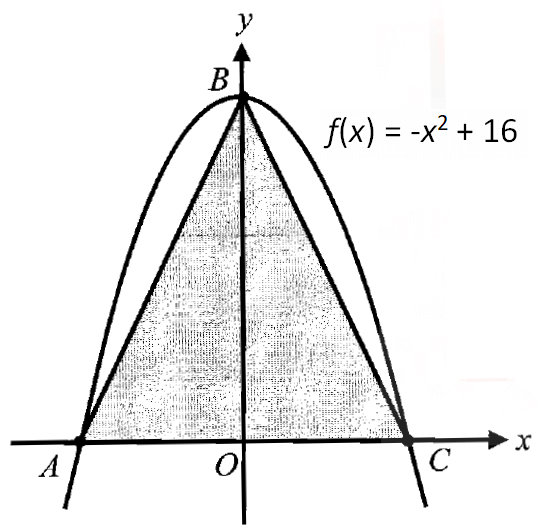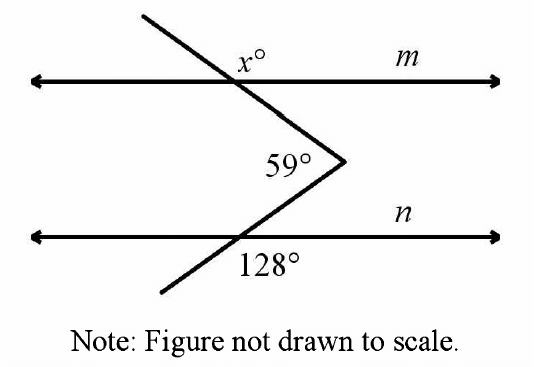EXPONENTS AND RADICALS
Exponents
Exponent is used to indicate repeated multiplication of the same number.
An expression like 54 is called a power. The number 5 is the base and 4 is the exponent.
54 = 5 ⋅ 5 ⋅ 5 ⋅ 5
The exponent 4, indicates the number of times the base appears as a
factor. An exponent is also called a power
In evaluating the power of 54, we have four factors of 5.
54 is read "5 to the fourth power".
Laws of Exponents
∙ Product Law :
The product of two powers with the same base equals that base raised to the sum of the exponents.
If x is any nonzero real number and m and n are integers, then
xm ⋅ xn = xm + n
Example :
34 ⋅ 35 = 34 + 5
= 39
∙ Quotient Law :
The quotient of two non zero powers with the same base equals the base raised to the difference of the exponents.
If x is any nonzero real number and m and n are integers, then
xm ÷ xn = xm - n
Example :
37 ÷ 35 = 37 - 5
= 32
∙ Power Law :
A power raised to another power equals that base raised to the product of the exponents.
If x is any nonzero real number and m and n are integers, then
(xm)n = xmn
Example :
(32)4 = 32(4)
= 38
Some other laws of exponents :
1. A product raised to a power equals the product of each factor raised to that power.
If x and y are any nonzero real numbers and m is any integer, then
(xy)m = xm ⋅ ym
Example :
(3 ⋅ 5)2 = 32 ⋅ 52
= 9 ⋅ 25
= 225
2. A quotient raised to a positive power equals the quotient of each base raised to that power.
If x and y are any nonzero real numbers and m is a positive integer, then
(x/y)m = xm/ym
Example :
(3/5)2 = 32/52
3. A quotient raised to a negative power equals the reciprocal of the quotient raised to the opposite (positive) power.
If x and y are any nonzero real numbers and m is a positive integer, then
(x/y)-m = (y/x)m
Example :
(5/3)-2 = (3/5)2
4. If a power is moved from numerator to denominator or denominator to numerator, the sign of the exponent has to be changed.
x-m = 1/xm
Example :
3-2 = 1/32
5. For any nonzero base, if the exponent is zero, its value is 1.
x0 = 1
Example :
30 = 1
6. For any base base, if there is no exponent, the exponent is assumed to be 1.
x1 = x
Example :
31 = 3
7. If an exponent is transferred from one side of the equation to the other side of the equation, reciprocal of the exponent has to be taken.
xm/n = y ----> x = yn/m
Example :
x2/3 = 3
x = 33/2
8. If two powers are equal with the same base, exponents can be equated.
ax = ay ----> x = y
Example :
3m = 35 ----> m = 5
9. If two powers are equal with the same exponent, bases can be equated.
xa = ya ----> x = y
Example :
k3 = 53 ----> k = 5
Note :
Many students do not know the difference between
(-3)2 and -32
Order of operations (PEMDAS) dictates that parentheses take precedence.
(-3)2 = (-3) ⋅ (-3)
(-3)2 = 9
Without parentheses, exponents take precedence :
-32 = -3 ⋅ 3
-32 = -9
The negative is not applied until the exponent operation is carried through. We have to make sure that we understand this. So, we will not make this common mistake.
Sometimes, the result turns out to be the same, as in.
(-2)3 and -23
We have to make sure why they yield the same result.
Solving Problems on Exponents
Problem 1 :
If 42n + 3 = 8n + 5, then find the value of n.
Solution :
42n + 3 = 8n + 5
(22)2n + 3 = (23)n + 5
22(2n + 3) = 23(n + 5)
Equate the exponents.
2(2n + 3) = 3(n + 5)
4n + 6 = 3n + 15
n = 9
Problem 2 :
If 2x/2y = 23, then find the value x in terms of y.
Solution :
2x/2y = 23
2x - y = 23
x - y = 3
x = y + 3
Problem 3 :
If ax = b, by = c and cz = a, then find the value of xyz.
Solution :
ax = b
Substitute a = cz.
(cz)x = b
czx = b
Substitute c = by.
(by)zx = b
bxyz = b
bxyz = b1
xyz = 1
Problem 4 :
If k(2x) = 2x+3 - 2x, then solve for k.
Solution :
Using laws of exponents, we have
k(2x) = 2x ⋅ 23 - 2x
k(2x) = 2x ⋅ 8 - 2x
k(2x) = 2x(8 - 1)
k(2x) = 2x(7)
Divide each side by 2x.
k = 7
Radicals
"Radicals" is a common concept in algebra. In fact, we think of radicals as reversing the operation of an exponent.
Hence, instead of the “square” of a number, we “square root” a number; instead of the “cube” of a number, we “cube root” a number to reverse the square to find the base.
Square roots are the most common type of radical used in algebra.
If 'a' is a positive real number, then the principal square root of a number 'a' is defined as
√a = b if and only if a = b2
If something is given like 3√a, then 3 is called the root or index; hence, 3√a is called the cube root or third root of 'a'.
In general,
n√a = b if and only if a = bn
If n is even, then 'a' and 'b' must be greater than or equal to zero. If n is even, then 'a' and 'b' must be any real number.
n√a can be written as a1/n.
or
n√a = a1/n
Laws of Radicals
Law 1 :
n√(ab) = n√an√b
Law 2 :
n√(a/b) = n√a/n√b
Law 3 :
n√(an) = a
Law 4 :
n√(am) = am/n
Note :
n√a + n√b ≠ n√(a + b)
n√a - n√b ≠ n√(a - b)
Solving Problems on Radicals
Problem 5 :
Evaluate :
√64 + √196
Solution :
Because 64 and 196 are perfect squares, we can find the square root of 64 and 194 as shown below.
|
√64 = √(8 ⋅ 8) √64 = 8 |
√196 = √(14 ⋅ 14) √196 = 14 |
√64 + √196 = 8 + 14
= 22
Problem 6 :
(√3)3 + √27
Answer :
(√3)3 + √27 = (√3 ⋅ √3 ⋅ √3) + √(3 ⋅ 3 ⋅ 3)
= (3 ⋅ √3) + 3√3
= 3√3 + 3√3
Problem 7 :
Solve for x :
1/3√x = 2
Solution :
1/3√x = 2
1/x1/3 = 2
x-1/3 = 2
x = 2-3
x = 1/23
x = 1/8
Problem 8 :
Simplify :
3√(x6y9)
Solution :
= 3√(x6y9)
= (x6y9)1/3
= (x6)1/3(y9)1/3
= x6/3y9/3
= x2y3
Kindly mail your feedback to v4formath@gmail.com
We always appreciate your feedback.
©All rights reserved. onlinemath4all.com
Recent Articles
-
Digital SAT Math Problems and Solutions (Part - 143)
Apr 13, 25 12:01 PM
Digital SAT Math Problems and Solutions (Part - 143) -
Quadratic Equation Problems with Solutions
Apr 12, 25 08:21 PM
Quadratic Equation Problems with Solutions -
Digital SAT Math Problems and Solutions (Part - 142)
Apr 11, 25 06:26 PM
Digital SAT Math Problems and Solutions (Part - 142)

